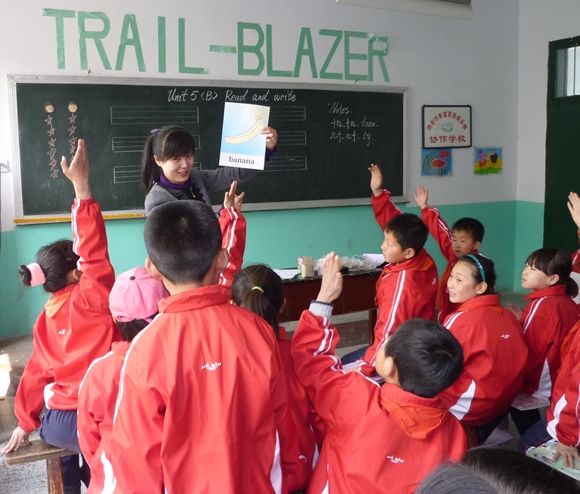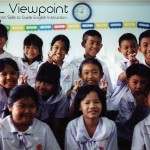Imagine waking up to the vibrant sights and sounds of bustling Asian cities, teaching energetic children English and physical education, and immersing yourself in a new culture. For TESOL teachers, Asia offers a wide range of job opportunities that combine teaching English with physical education (PE), allowing educators to stay active and engaged while shaping young minds. In this article, we’ll explore how to apply for these jobs, the unique benefits of teaching in Asia, and how the TESOL for Children Certification can equip you with the skills to succeed in teaching young learners.
The Unique Appeal of Teaching English and Physical Education in Asia
Teaching English in Asia is already a rewarding experience, but adding physical education to your schedule brings a new dimension to your teaching career. Many schools across Asia are now combining these two fields to provide holistic education, especially in international and bilingual schools. Here’s why this combination is so appealing:
- A Balanced Teaching Schedule
Teaching both English and PE allows you to mix classroom instruction with active, outdoor activities. You’ll be able to guide students through language lessons in the morning and sports or physical fitness classes in the afternoon, creating a well-rounded teaching day that keeps both you and your students energized. - Opportunities for Creativity
Incorporating physical activity into English lessons provides unique opportunities for creativity. For example, you can teach vocabulary and grammar while playing interactive games like soccer or basketball, helping students learn language concepts while staying physically active. - Strong Demand for Active Learning
Schools in countries like China, South Korea, and Thailand are increasingly focused on developing both the minds and bodies of their students. As a result, there’s a strong demand for teachers who can integrate physical education with language learning, fostering a dynamic, engaging classroom environment.
Applying for Jobs in Asia: English and Physical Education
When applying for positions that combine English and PE teaching in Asia, there are a few key steps to keep in mind:
- Research Job Opportunities
Schools across Asia frequently advertise openings for teachers skilled in both English and physical education. Start by checking international school job boards, TESOL websites, and recruitment agencies that specialize in placing teachers in Asia. Countries like Japan, Vietnam, and Taiwan often seek educators with diverse skill sets to provide students with a well-rounded education. - Highlight Your Versatile Skills
In your resume and cover letter, emphasize your ability to teach both English and physical education. Mention any certifications, such as your TESOL for Children Certification or fitness-related qualifications. Schools will be impressed by your versatility and willingness to contribute to both academic and physical development. - Prepare for the Interview
When interviewing for these positions, be ready to demonstrate how you can balance both English and PE instruction. Schools will want to know how you can engage young learners in language acquisition while promoting physical fitness. Discuss your approach to blending these subjects, such as incorporating sports vocabulary into English lessons or using physical activities to reinforce grammar and communication skills.
TESOL for Children Certification: Equipping You to Teach Young Learners
The TESOL for Children Certification is a specialized program designed to prepare teachers for the unique challenges and rewards of teaching young learners. Here’s why this certification is essential for those planning to teach English and physical education to children in Asia:
- Understanding Child Development
Young learners require different teaching strategies than older students or adults. The TESOL for Children Certification covers topics like language acquisition in children, age-appropriate teaching methods, and classroom management for younger students. With this certification, you’ll be better equipped to teach English in a way that resonates with kids, keeping lessons engaging and fun. - Activity-Based Learning
One of the key components of the TESOL for Children Certification is learning how to incorporate games, songs, and physical activities into English lessons. This training is perfect for teachers combining English and physical education, as it encourages using movement and play to reinforce language skills. Whether you’re teaching vocabulary through relay races or practicing grammar with team sports, you’ll learn techniques to keep young learners excited about English. - Cultural Sensitivity
Teaching in Asia requires an understanding of the cultural norms and values that influence classroom dynamics. The TESOL for Children Certification prepares you to be sensitive to the cultural differences you may encounter when teaching in countries like South Korea, China, or Indonesia. You’ll learn how to adapt your lessons to meet the needs of students from diverse backgrounds, ensuring your approach is both effective and respectful.
Little-Known Fun Facts About Teaching PE and English in Asia
- Martial Arts and English Fusion
In countries like South Korea and Japan, martial arts such as Taekwondo and Karate are often incorporated into physical education programs. Some international schools offer classes that combine martial arts training with English language instruction, providing a unique way to teach discipline, focus, and language skills simultaneously. - Yoga in the Classroom
Yoga is becoming increasingly popular in schools across Southeast Asia, with many international schools offering yoga as part of their PE curriculum. For teachers, this provides an opportunity to introduce mindfulness and wellness concepts in English, helping students relax and improve their concentration. - Bilingual Sports Days
Many international schools in Asia host bilingual sports days where students participate in activities while practicing English. These events are a great way for TESOL teachers to combine language instruction with team-building and physical education, creating a fun and interactive learning environment.
Making the Most of Your Teaching Experience in Asia
Teaching English and physical education in Asia is more than just a job—it’s an adventure that allows you to explore new cultures, stay active, and make a meaningful impact on young learners. Here are a few tips for making the most of your experience:
- Embrace Local Sports and Activities
Asia has a rich tradition of sports and physical activities, from dragon boat racing in China to Sepak Takraw (kick volleyball) in Thailand. Incorporate these local sports into your PE classes to give students a sense of cultural pride while practicing English. - Build Strong Relationships with Students
Teaching young learners requires patience, creativity, and a sense of humor. Use games, activities, and stories to connect with your students, making English and physical education classes a highlight of their day. - Explore the Region
While you’re teaching in Asia, take the opportunity to travel and explore the diverse countries around you. From the bustling streets of Tokyo to the serene beaches of Bali, Asia is full of incredible experiences that will enrich your time abroad.
Conclusion: A Dynamic Pathway to Success
Teaching English and physical education in Asia is an exciting and fulfilling career path for TESOL teachers who enjoy staying active and engaging with young learners. By obtaining your TESOL for Children Certification, you’ll gain the skills needed to make a positive impact in the classroom, helping children learn English in a way that’s fun, interactive, and physically active.
With the right preparation, applying for jobs in Asia that combine English and physical education can lead to a rewarding teaching experience that enriches both you and your students. So why not take the leap and apply to these dynamic roles today? The adventure of a lifetime awaits!



